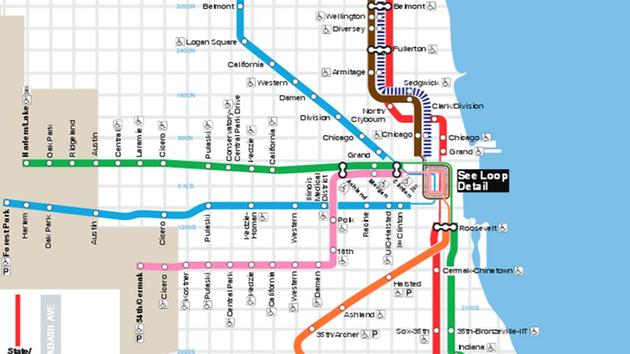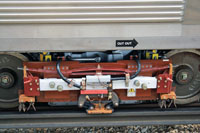JULY 10, 2016
Chicago Tribune staff
A man hit by a CTA Blue Line train Friday night at the Austin Boulevard stop died from touching the electrified third rail, not from injuries suffered when he was hit by the train, authorities determined following an autopsy.
The third rail contains the 600 volts of direct current that is used to propel L trains.
The person made contact with the train about 7:15 p.m., said Jeff Lyon, a CTA spokesman. Lyon did not have information on the person's injuries.
The man, identified as a 47-year-old Cicero resident, was pronounced dead at 8:08 p.m., according to the Cook County medical examiner's office. He died from electrocution caused when he fell on the electrified third rail in an accident, the medical examiner's office determined following an autopsy Saturday.
Oak Park fire officials responded to the incident at the "L" station on the Oak Park side of Austin, according to a Chicago Fire Department spokesman.
=========================
Cicero man dies after falling onto Blue Line tracks in Oak Park

CHICAGO --
A Cicero man died after he fell onto the third rail and was struck
by a CTA Blue Line train Friday night in west suburban Oak Park.Louie M. Delao, 47, of the 1400 block of 61st Avenue "made contact with a train" about 7:15 p.m. at the Austin station, according to the CTA and the Cook County medical examiner's office.
An autopsy Saturday found Delao died of electrocution after a fall onto the third rail, according to the medical examiner's office. His death was ruled an accident.
Trains ran on a single track for about two hours as crews cleared the scene, but as of 9:55 p.m., service had resumed in both directions with residual delays, transit officials said.
============================
Third Rail and Trolley Shoes

|
The conductor rail is usually made of high conductivity steel, and the running rails have to be electrically connected using wire bonds or other devices, to minimize resistance in the electric circuit. On rail systems where the traction power is transmitted through rails, there has to be a positively-charged rail and a rail for the negative return. In some systems, there are two separate rails besides the running rails for this purpose, one positively charged and one negatively charged. On other systems, like the "L", the third rail carries the positive charge, and the negative return is sent through one of the running rails.
The electric current is transmitted from the conductor rail to the train's motors and power systems through metal contact blocks called "third rail shoes" or "trolley shoes" (or, often, simply "shoes") which make contact with the conductor rail. The shoes slide along the top of the conductor rail, with power transmitted by their physical contact.
The conductor rails have to be interrupted at level track crossings, at crossovers and switches, and at grade crossings with streets, and ramps are provided at the ends of the conductor rails sections to give a smooth transition to the train shoes.
